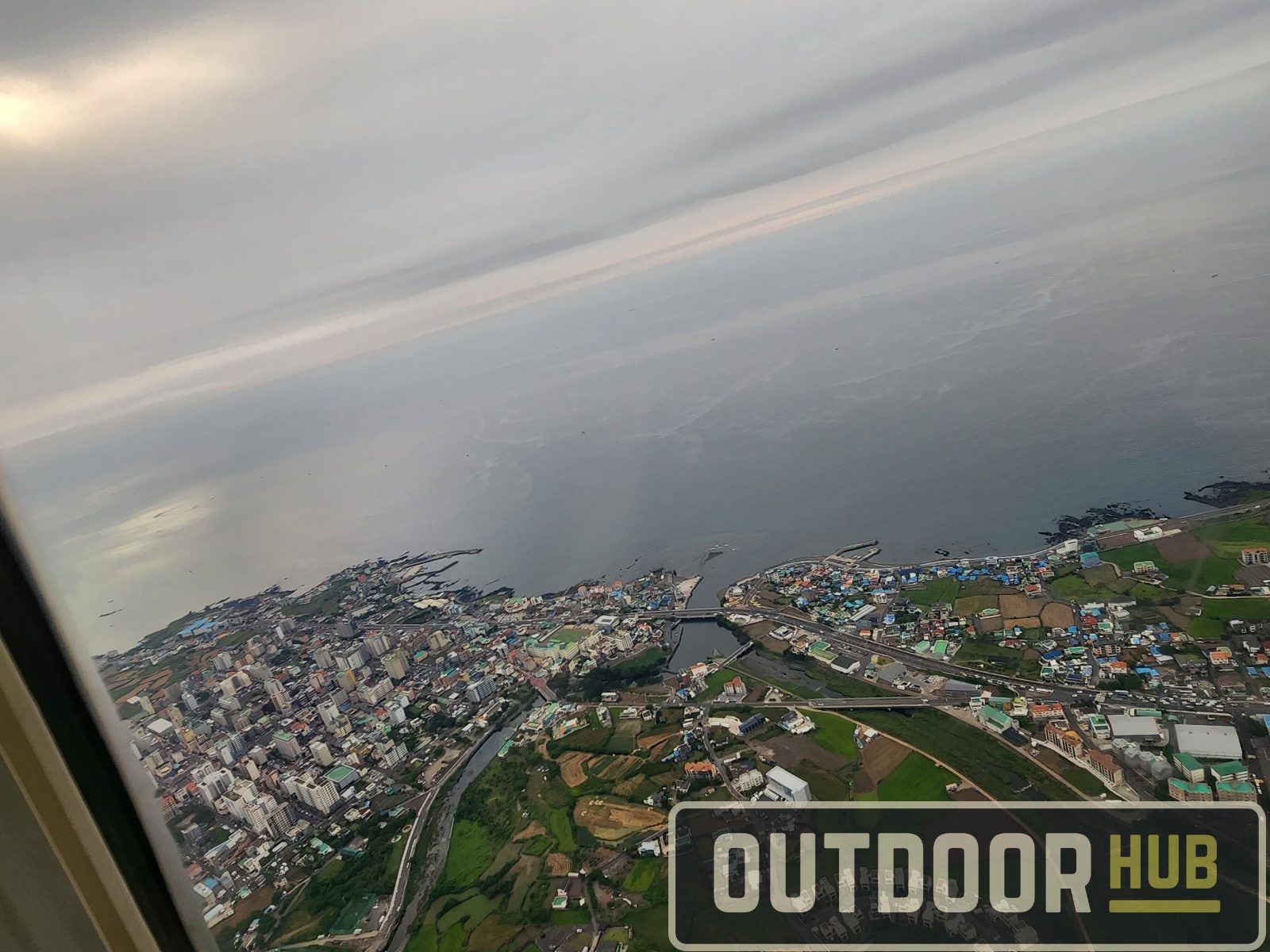Traveling South Korea – Shore Fishing Jeju Island
Eugene L. 09.29.23

Jeju Island has had a common nickname since the times of old Samda-do. The nickname means “Island of Three Abundances” in reference to the three things the island has the most of Wind, Stone, and Women. Jeju is located in the Korean Straight, where the winds are constantly blowing no matter the time of year. The island is covered in volcanic basalt stone everywhere, with plenty of “doldam” basalt stone walls that are all over the island. The last of the three, Women, was due to the fishing culture of the island. The land makes it tough to grow anything on so fishing was an important source of food. This led to tons of men being lost to the ocean trying to get that fish. Jeju Island is the largest island of South Korea, an oval-shaped volcanic island to the south of the mainland in the Korea Strait. Formed roughly 2 million years ago by the eruption of an underwater volcano and has been populated with modern people since the early Neolithic Period.
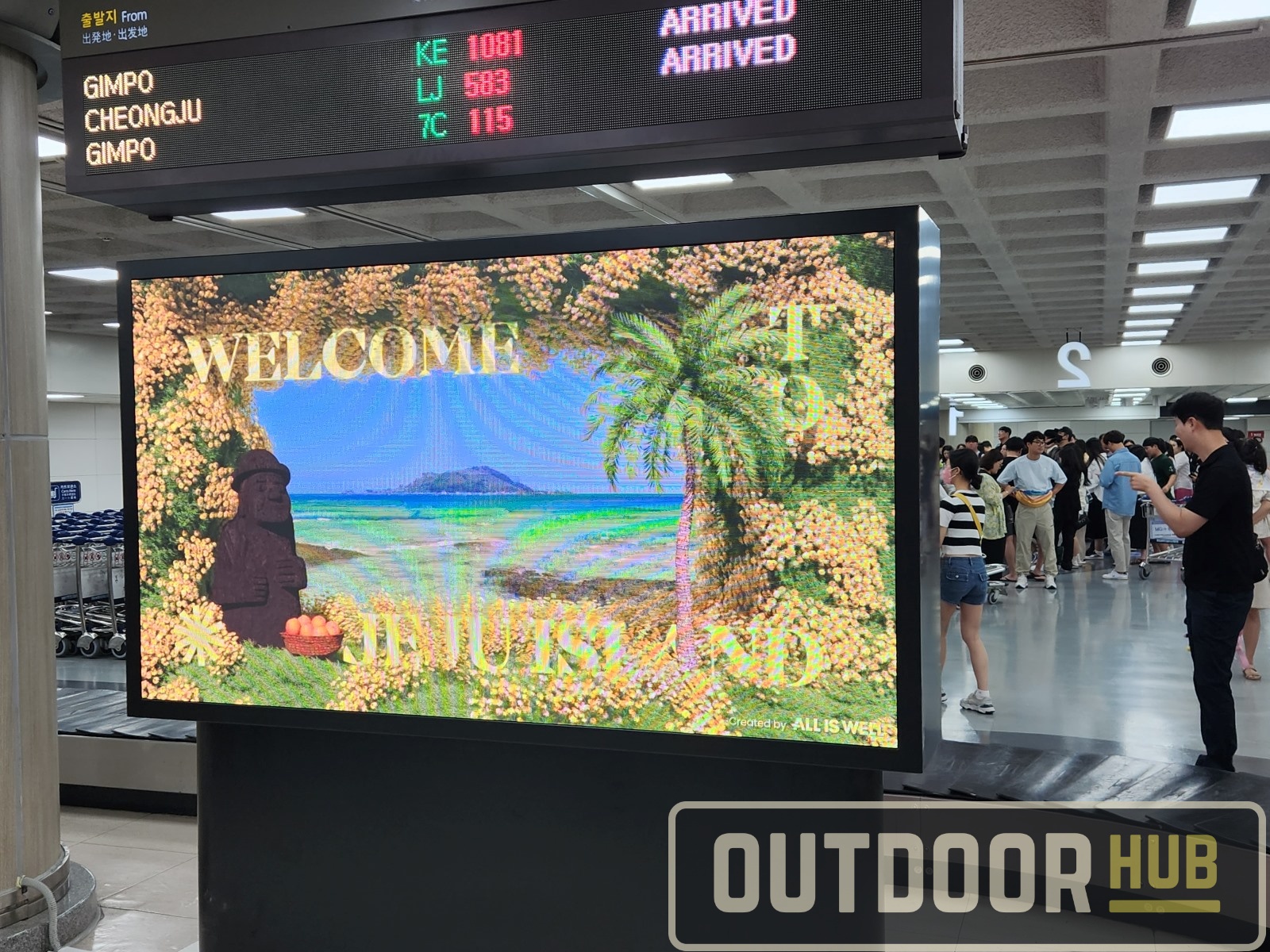
I got to visit and explore Jeju Island for a few days during my trip to South Korea. I got to take in all the natural beauty of the island and surrounding ocean, along with the culture of the island. I knew about this trip to Jeju ahead of time, so of course, I packed some fishing gear. How could I not fish on an island that I’ve seen on TV since I was a little kid? I had seen variety-shows of celebrities who would struggle to catch fish on Jeju and be excited by the smallest rockfish. So I assumed with all my experience and techniques from here I would do great out there. Fishing techniques and lures that the fish haven’t been exposed to before. I was very wrong.
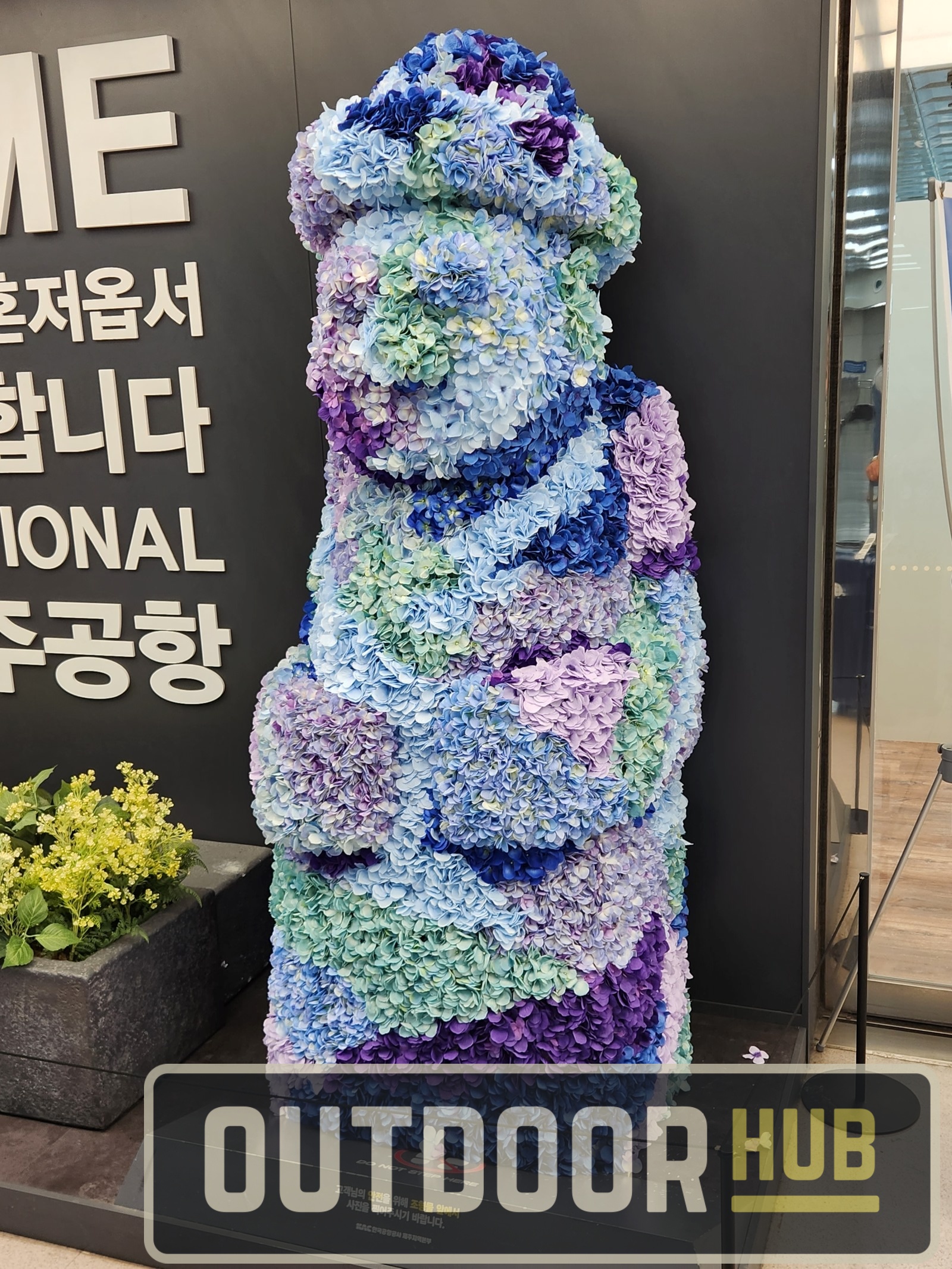
I do need to say this was not a 3-day fishing trip for me. I had a bit of time each day to fish at different spots as we explored. My wife was gracious enough to let me fish, but I couldn’t tread on her kindness and fish the whole trip. Also, with so much to do and see on Jeju Island, it would be a waste to fish the whole time.
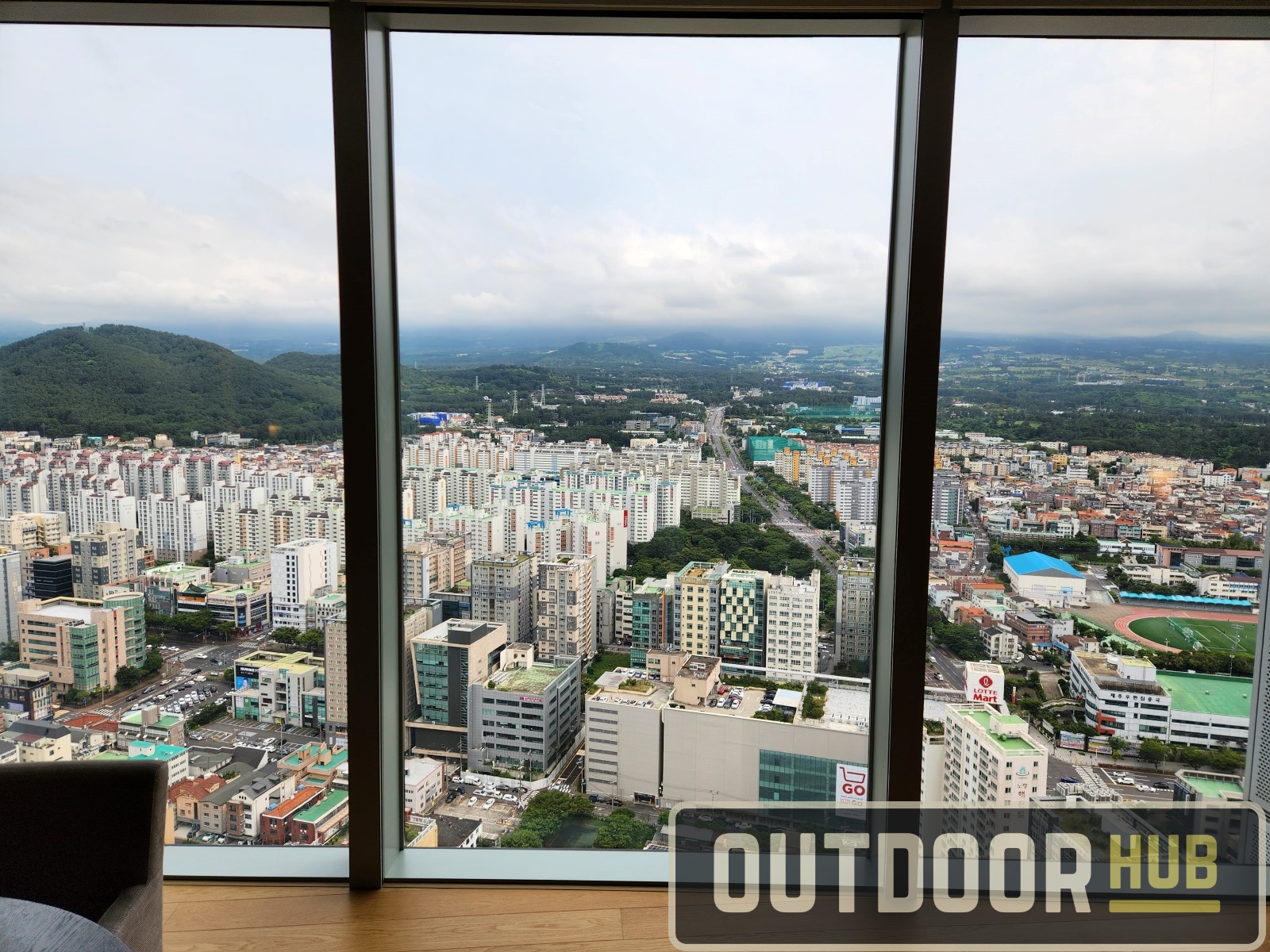
Even in Jeju City, the backdrop from the hotel is amazing with Mt. Hallasan and some parasitic cones being visible on clear days. Mt. Hallasan is the large shield volcano that makes up most of the island and is the highest peak in South Korea. The first stop of the first day was the O’sulloc Green Tea Fields and Museum on the island’s southwest side, a very cool and pretty spot to visit.
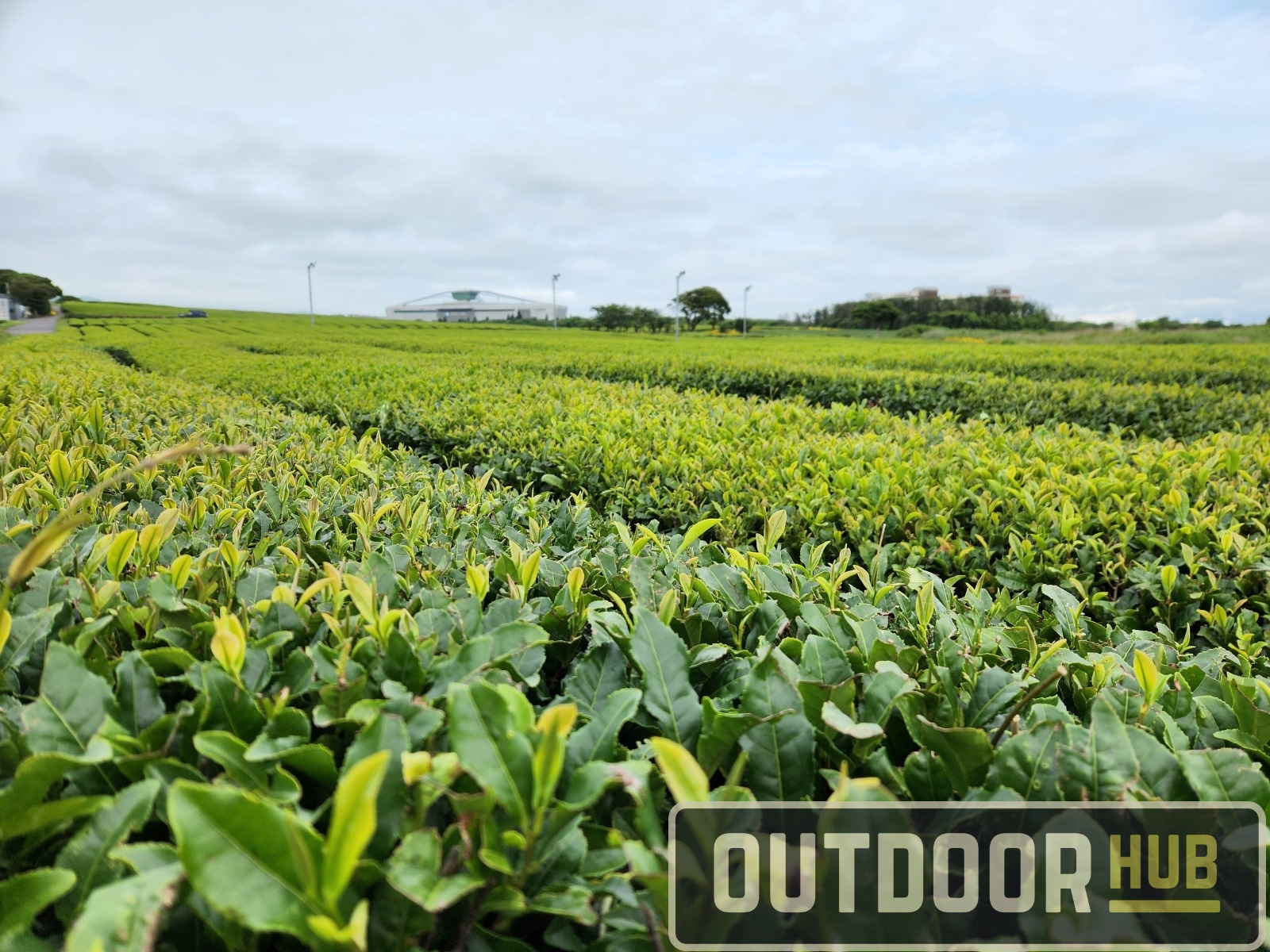
After visiting O’sulloc and driving through the island’s lush interior, I finally got to get some time on the water. We made our way to Hyeopjae Beach on the island’s north shore. It was a white sand beach that was surrounded by volcanic rock and seawalls. Hoping that there would be some sort of mackerel or jack species I tried throwing some flashy lures that I thought would work. The only thing that got some attention was a gold spoon that had a follower come up after it from the rocks, but it never struck. I even tried throwing a squid jig in the sandy patches along the seawall and rocks, hoping for a squid or cuttlefish hiding in the seaweed. After spending some time casting to no avail, the only thing I caught was a little shore crab from a tide pool. Probably could have used him as bait, but we had to go to the night market, which I’ll cover in another article.
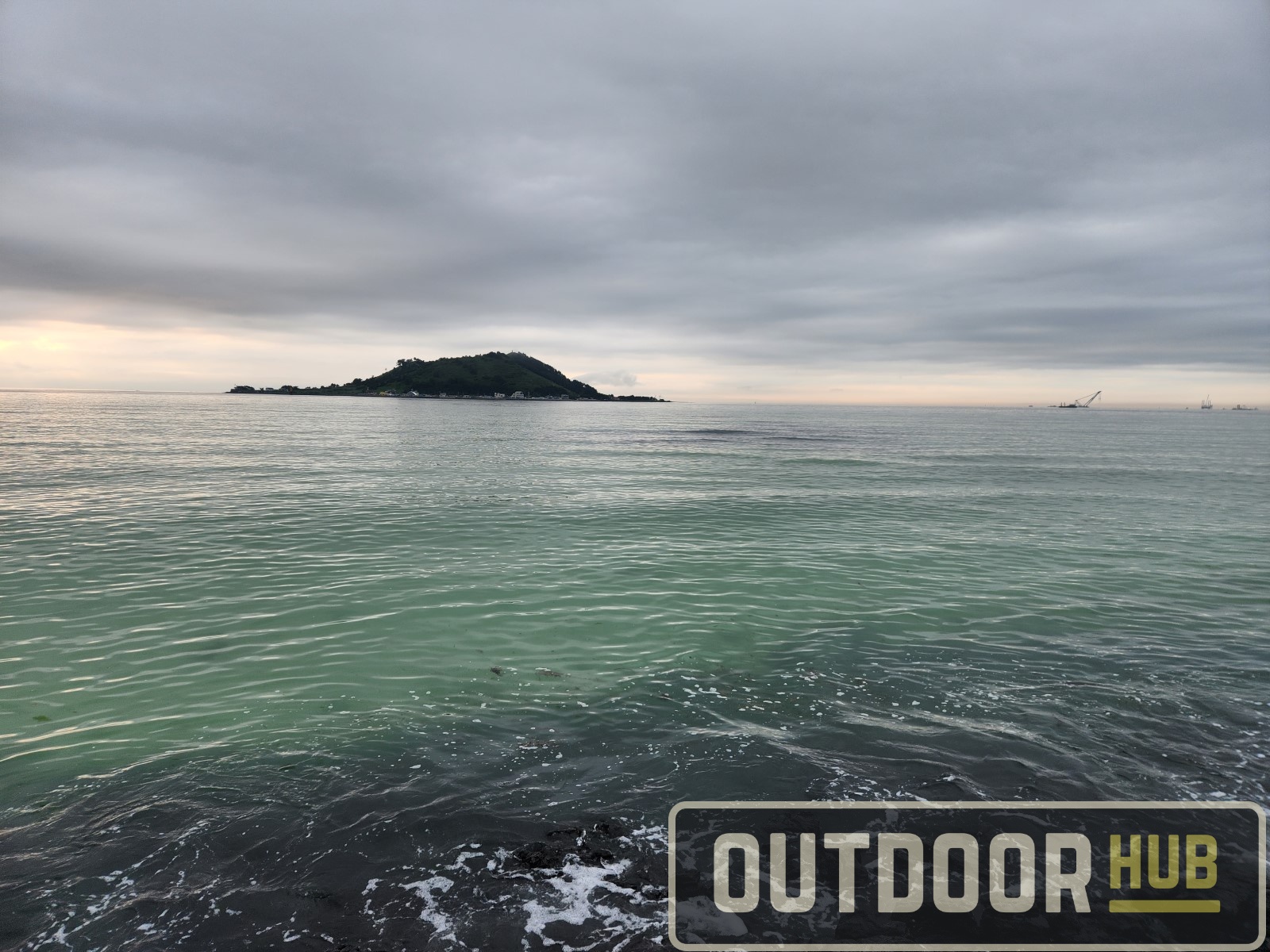
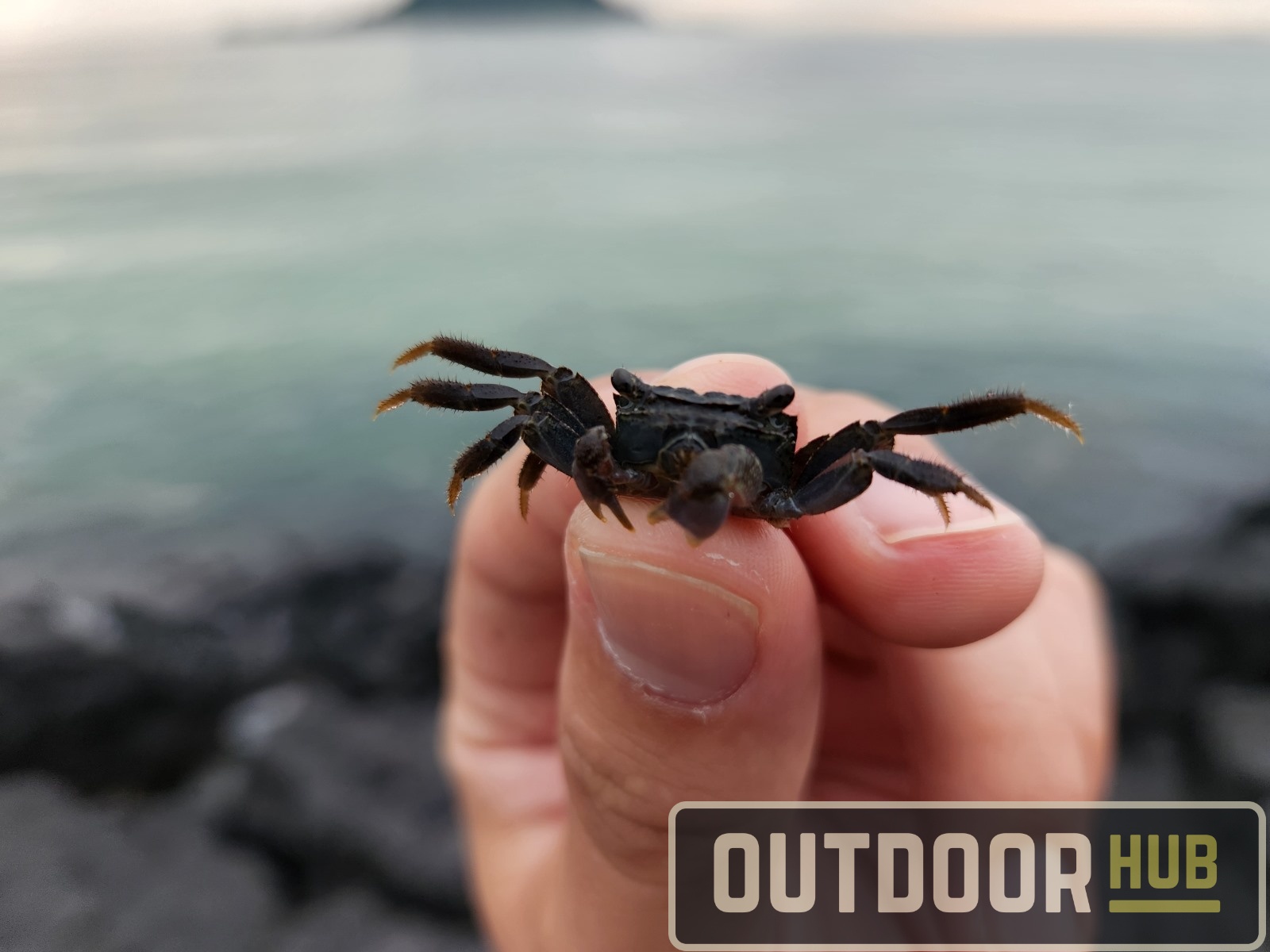
Day two of the trip was to explore the south coast of the island. The plan was to cut through the center and then drive along the south coast, taking in the sights as we went. While going along the coast we found a small marina where a bunch of fishing boats were parked. Seeing that it was deep water that was accessible from shore, I wanted to give it a shot. The water down here was a lot clearer than at Hyeopjae Beach. This let me see that there really isn’t much life out here bait-wise. This worried me some, fish follow their food. 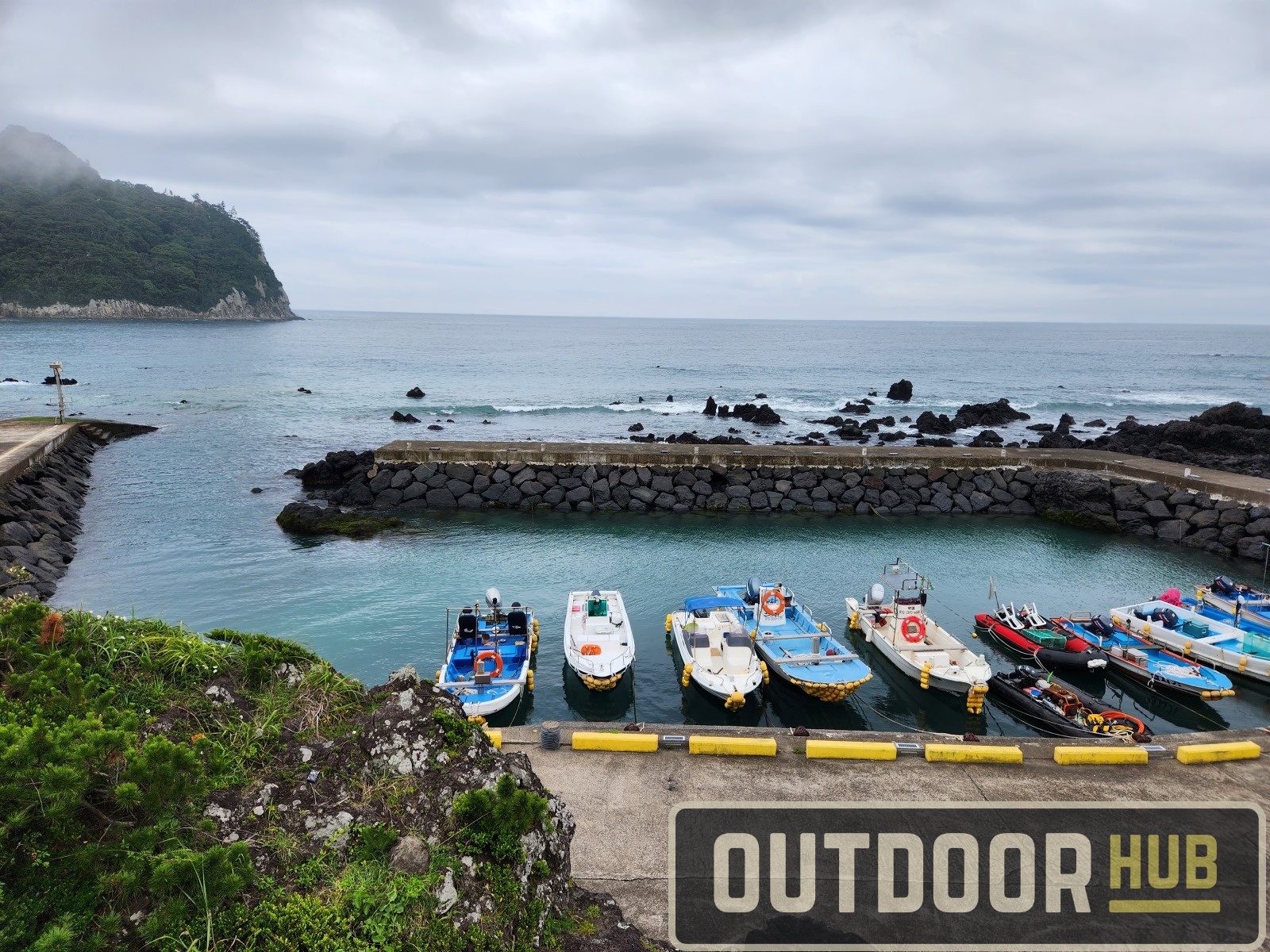
Seopseom Island in the Background
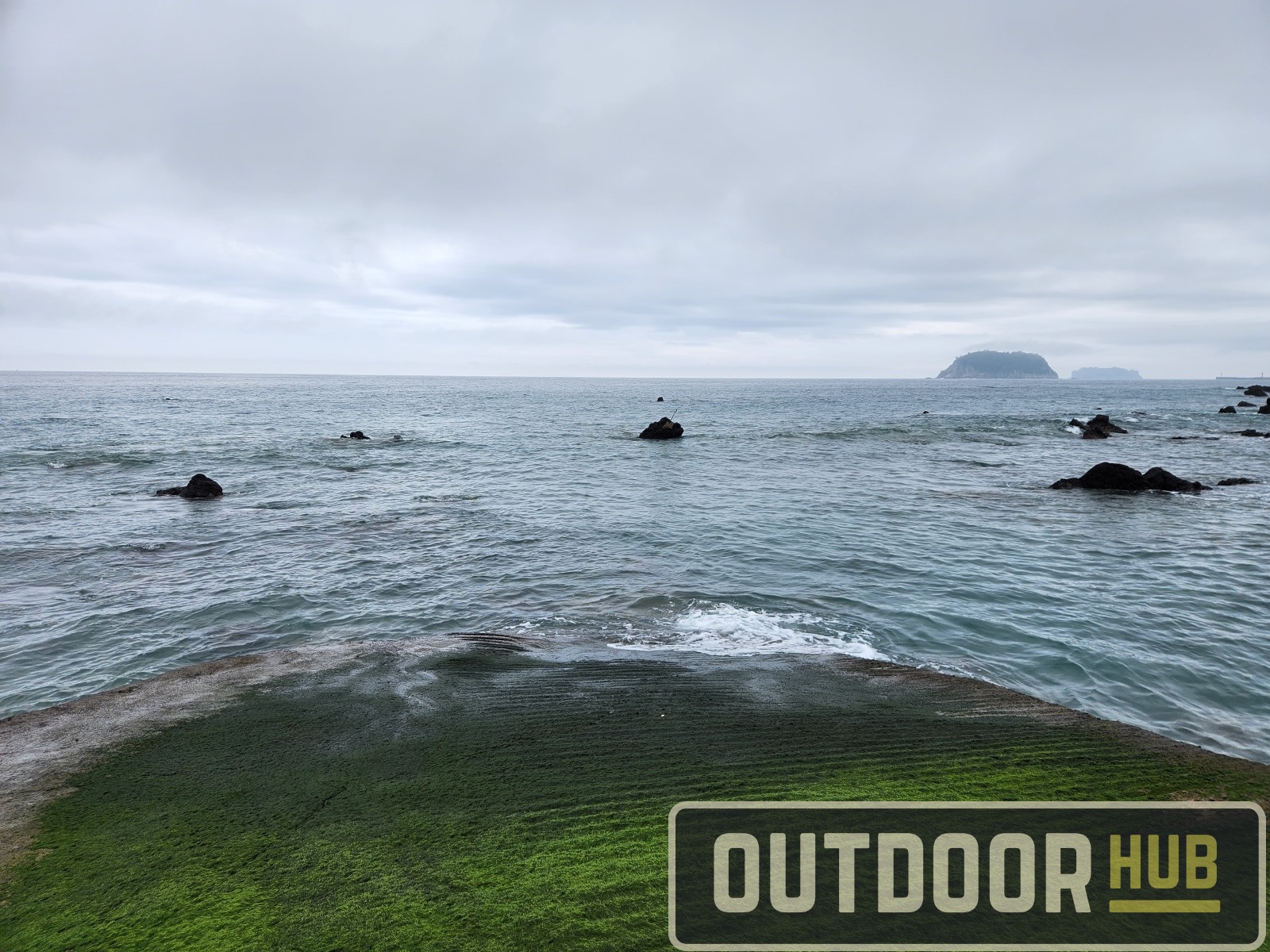
So I fished the lures again for the next hour. Everything in the tacklebox from topwater all the way down to hopping a tipped jig on the bottom. Fishing the whole water column, but still no luck. I didn’t even see a fish follow any of my lures up this time, unlike the day before. So Day Two was another goose egg for me. At least the views were great from the spot and the weather was nice.
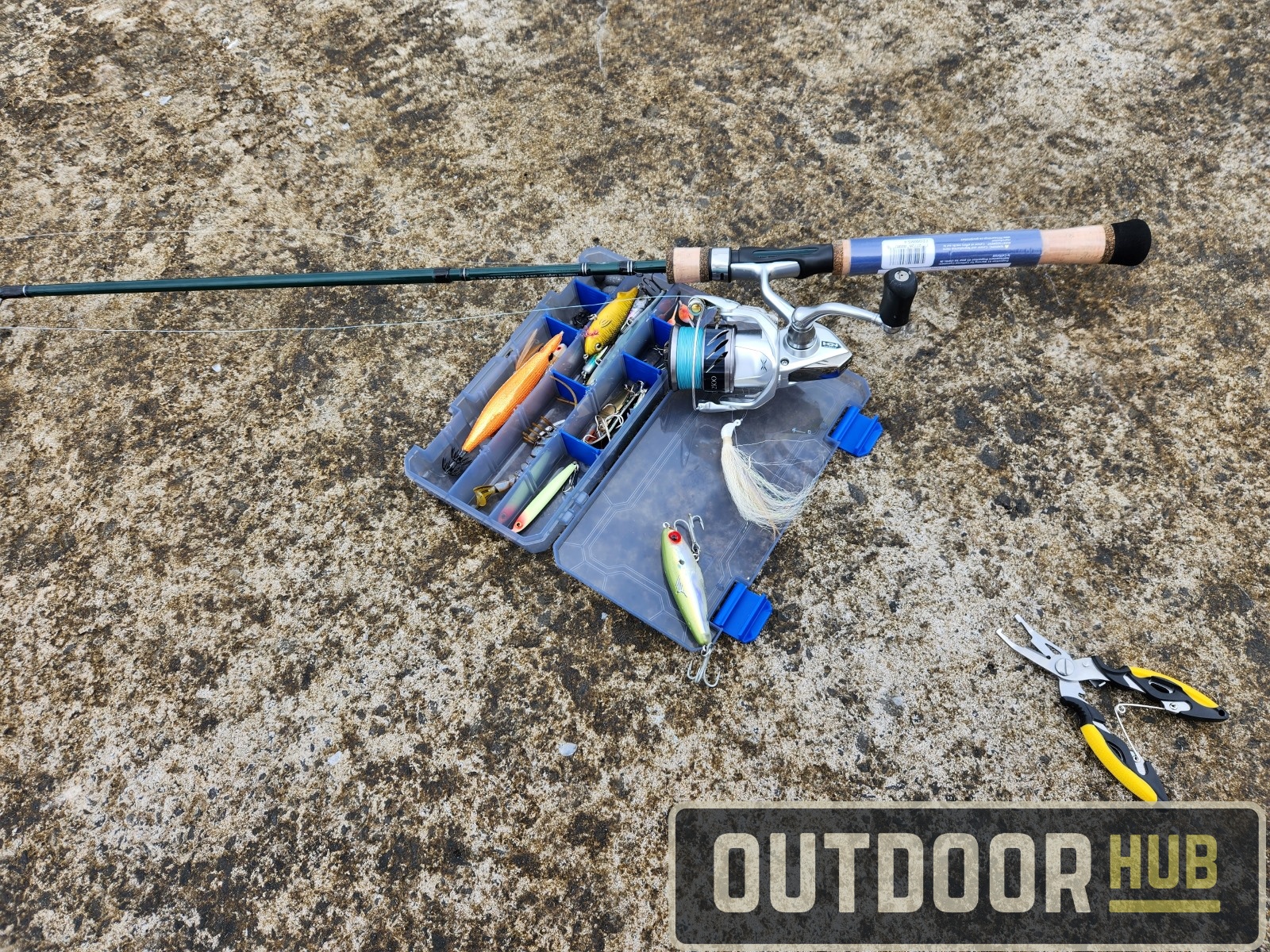

Day Three was our last day in Jeju, I was running short of time to catch something. Our flight back to the mainland was leaving at 5 pm and the rental car had to be returned by 3:30 pm. So we started the day early to try and explore as much as possible on our last day. We again went along the coast again, this time directly northeast of the city, and worked our way back towards the airport and rental car area. We saw sights like Yongyeon Pond below, an estuary that has fresh water flowing into the sea even during droughts.
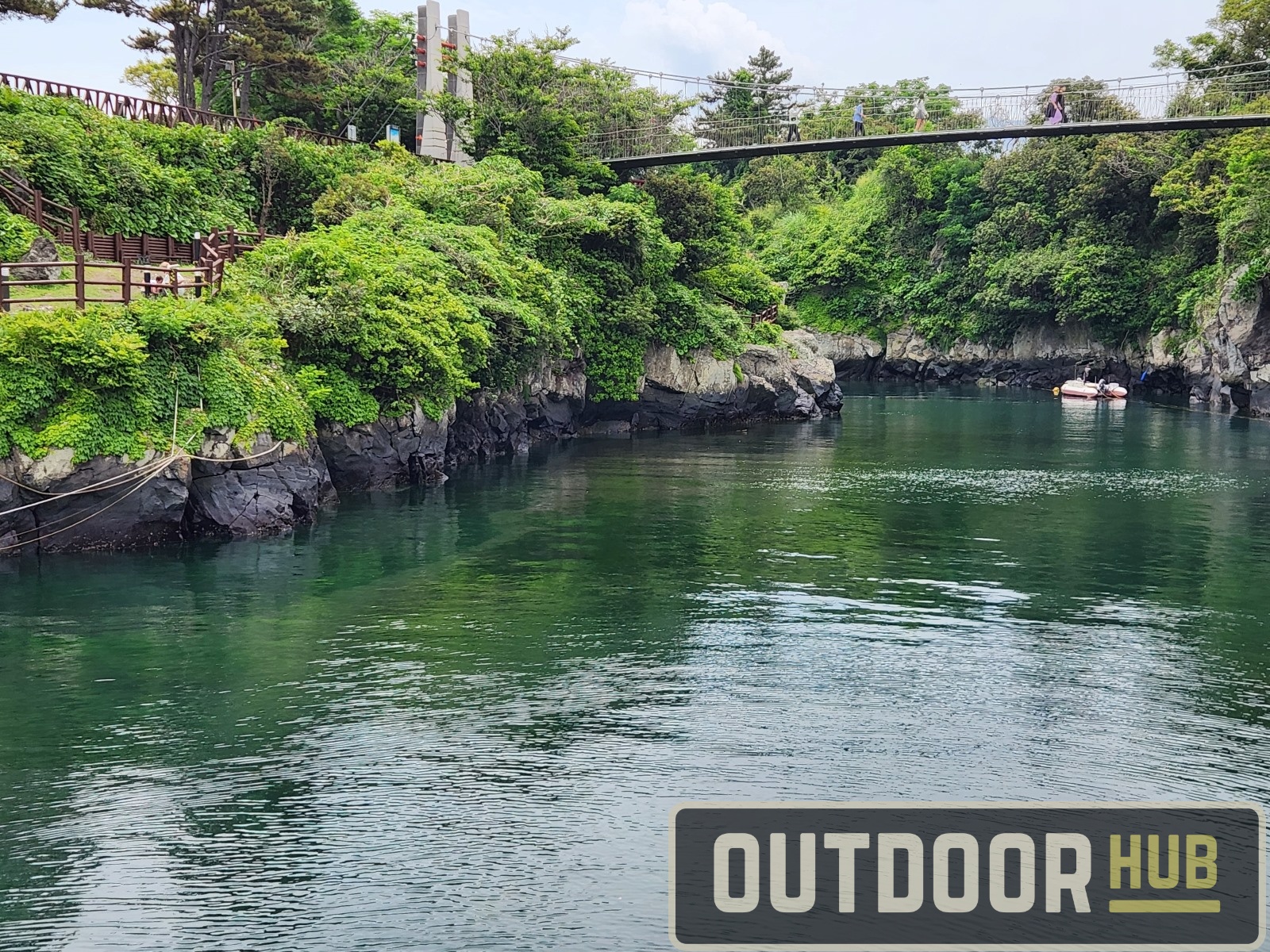

While exploring directly north of the airport, I noticed some people fishing on the rocks of the area. I also noticed everyone was fishing bait and not lures. Everyone here was using a fish meal and barley chum along to bring in the fish to their bait. They were also using long rods with bobber rigs. I had none of this stuff with me. The closest I had was a pack of shrimp fish bites, so I just kept throwing lures into this deeper water.
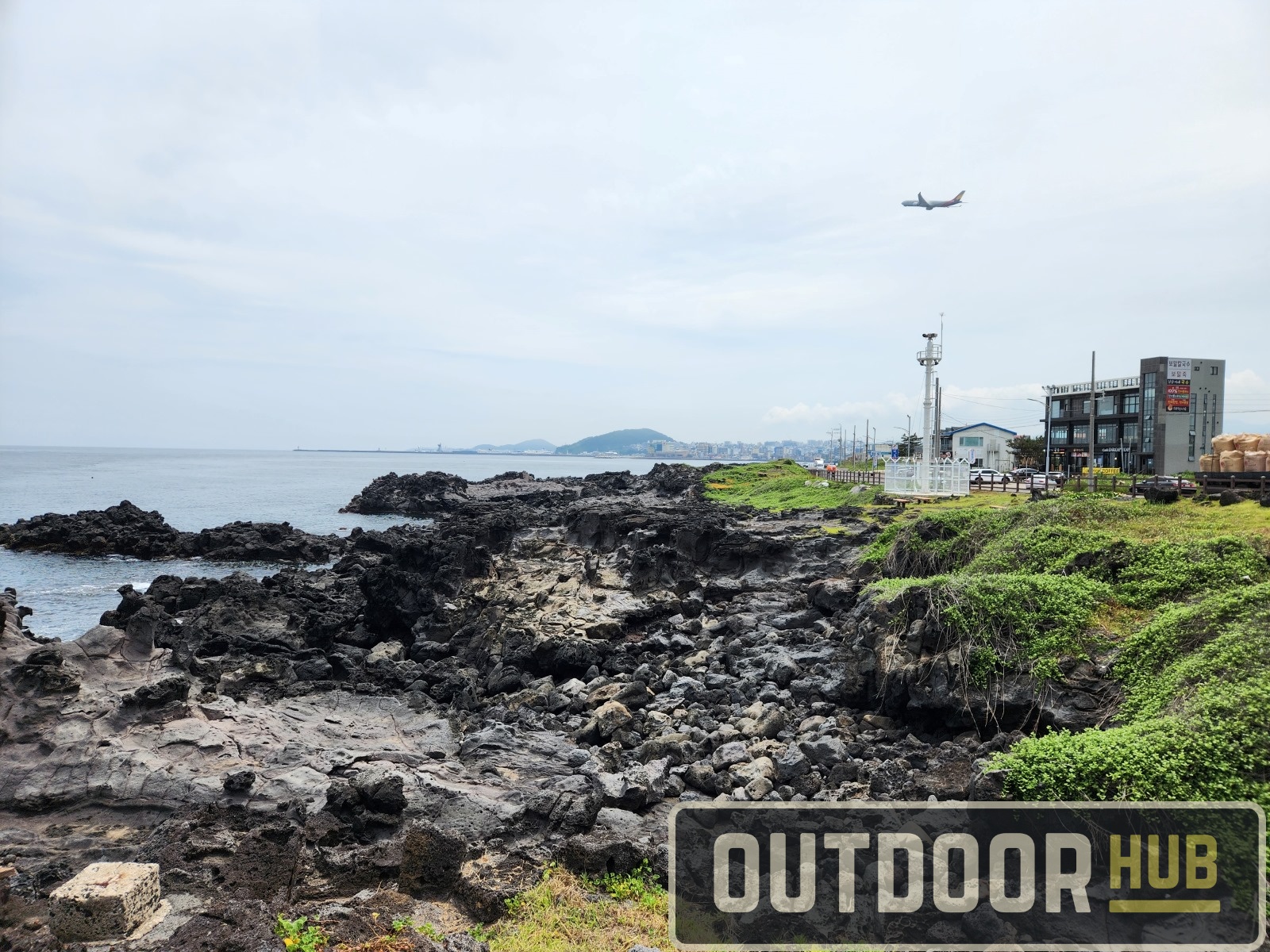
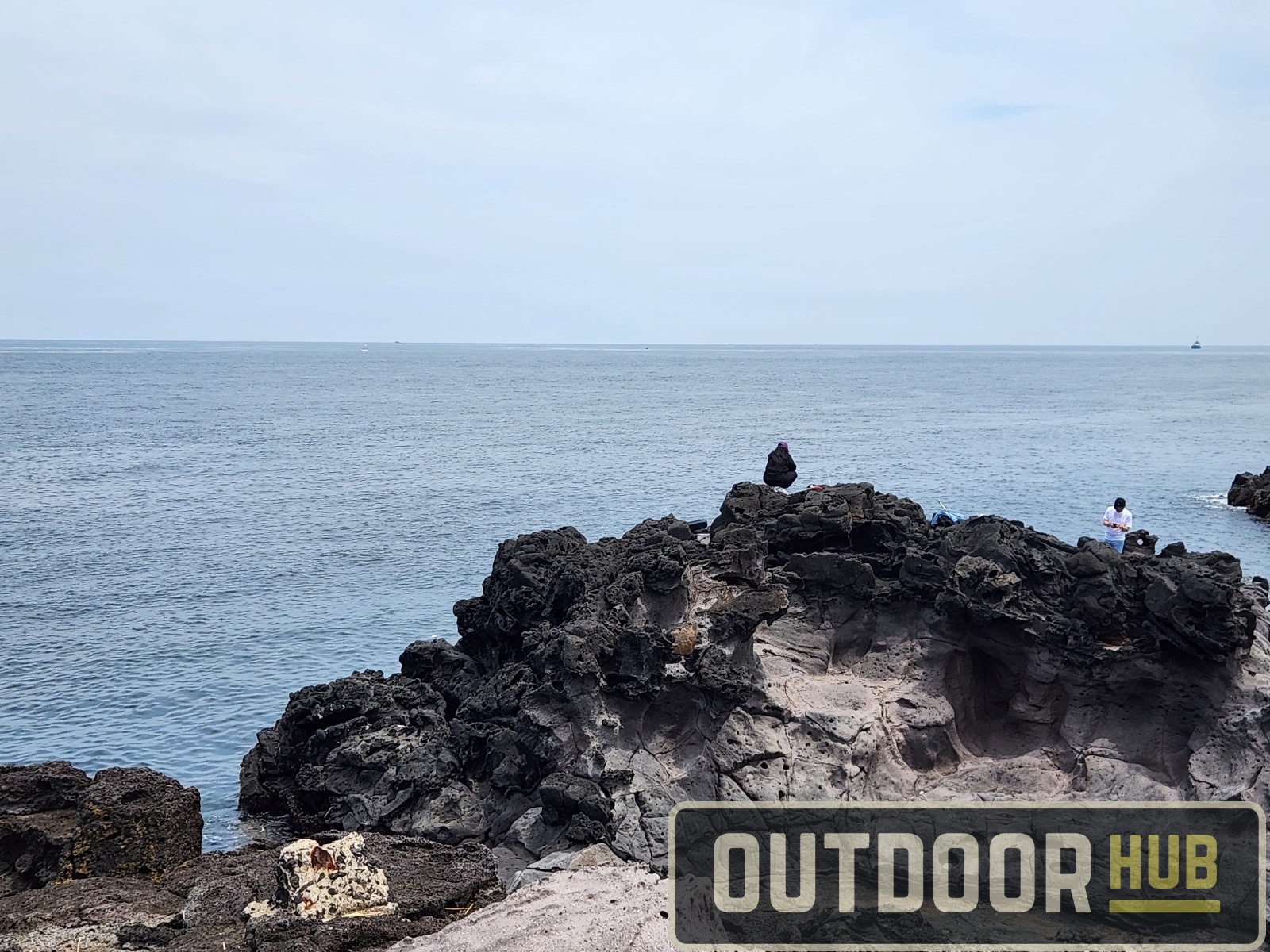
I thought might as well try lures again, no one else seemed to be catching anything. And the lures went 0/3, with everything in that box not getting so much as a nibble. I even lost a couple of bucktails. So I said screw it and grabbed a sabiki rig and start cutting up the shrimp fish bites. I put a niblet of fishbites on sabiki hooks and cast it out. And, of course, immediately got a bite.
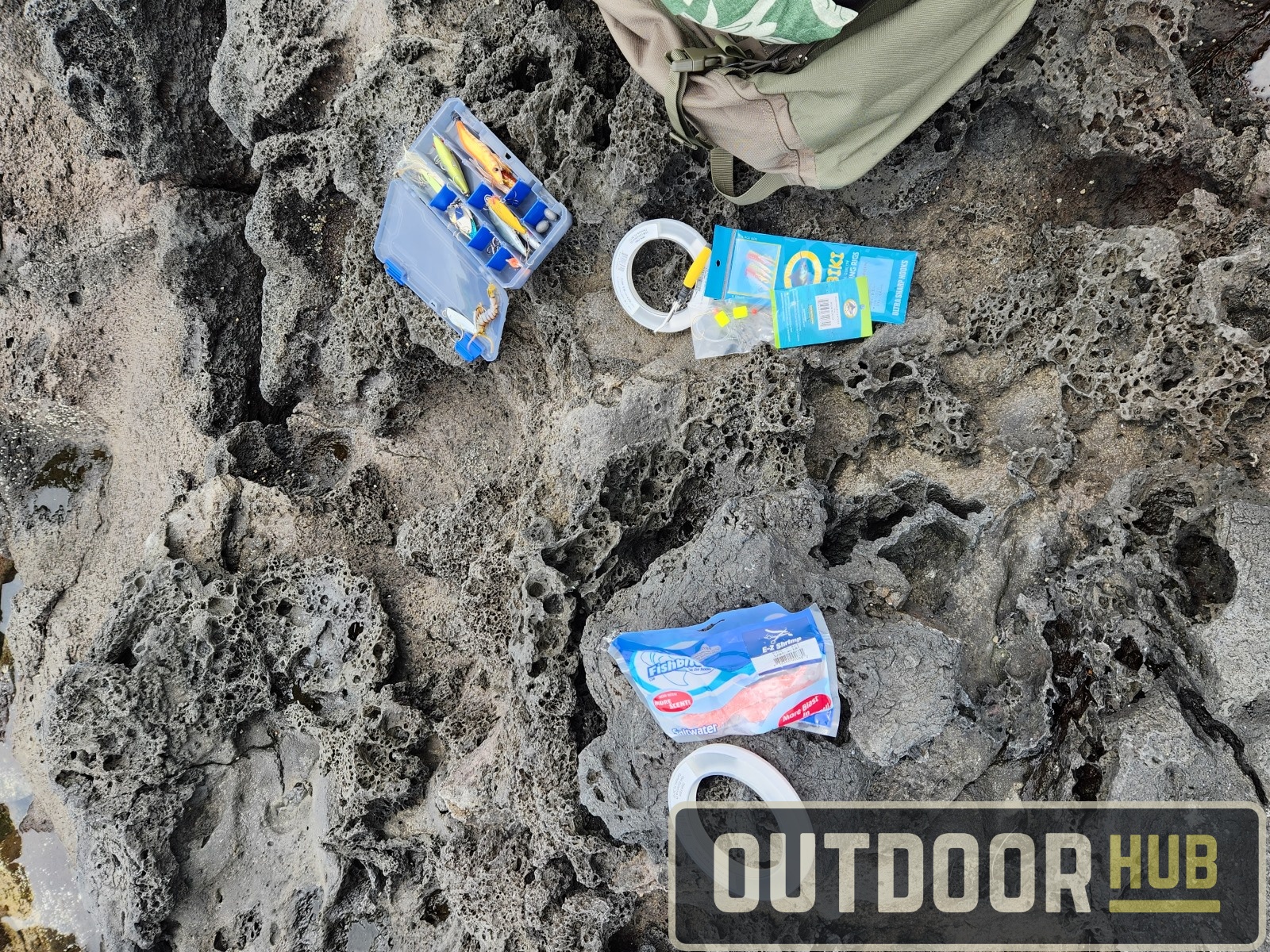
And, of course, I missed the bite. But this was progress, the first bite in three days. So I cast right back into the same hole and placed the rod down so I wouldn’t strike early. And in a few more minutes, I had what I thought was another bite. It was seaweed in the current, so I cast right back out again, to get another bite. This time I set the hook and finally had a fish on the line. I could already tell it wasn’t a big fish, but at this point, I would take anything with fins. Three days of trying culminated into this little mystery wrasse that I couldn’t identify.

After the fact, I identified it as a Cocktail Wrasse (Pteragogus flagellifer) a small species of wrasse that lives amongst the seaweed in shallow waters. It wasn’t a knifejaw or bream that I had hoped for no, but it was a fish. And a new species for me as well, so I’ll take it.
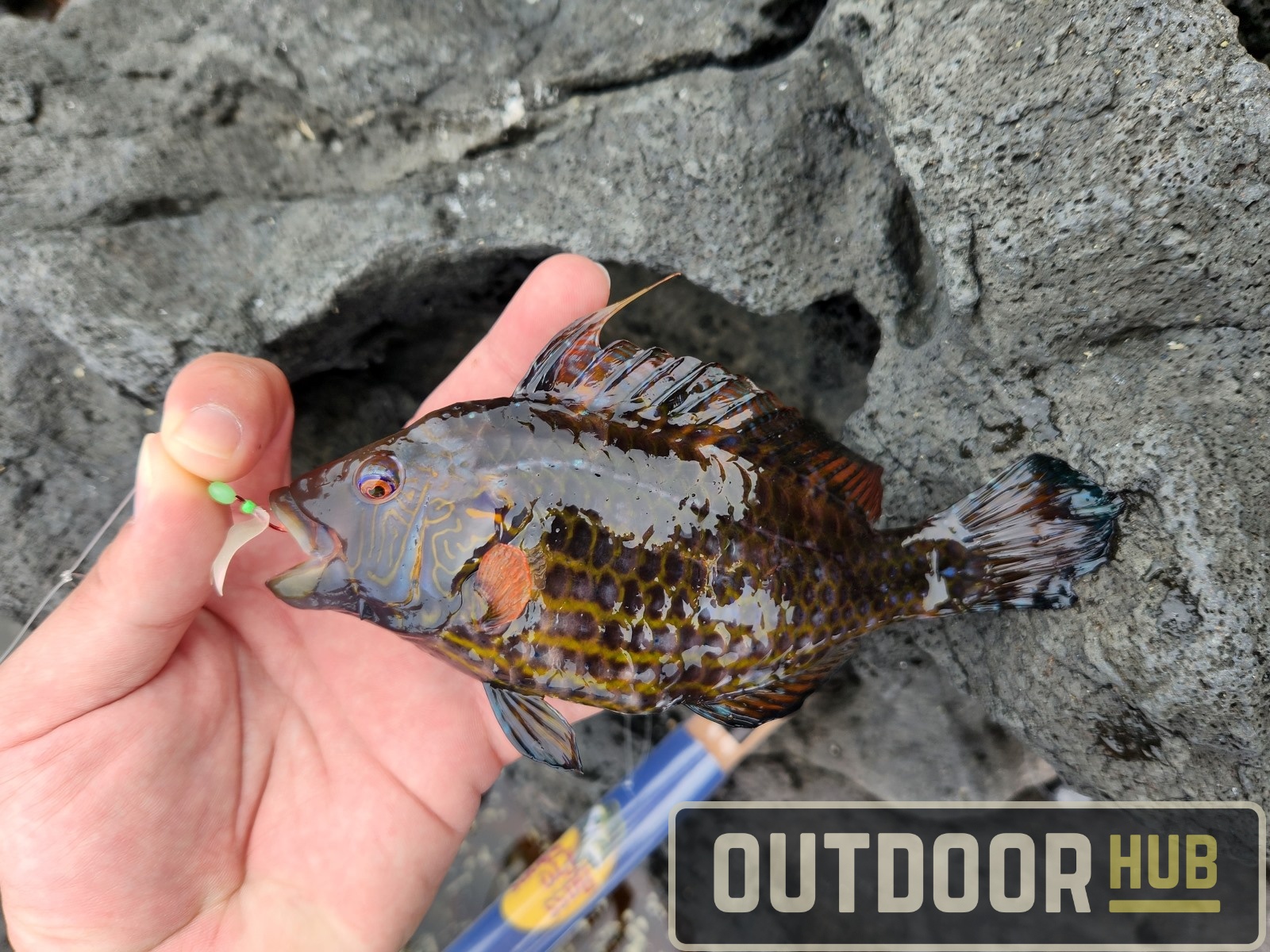
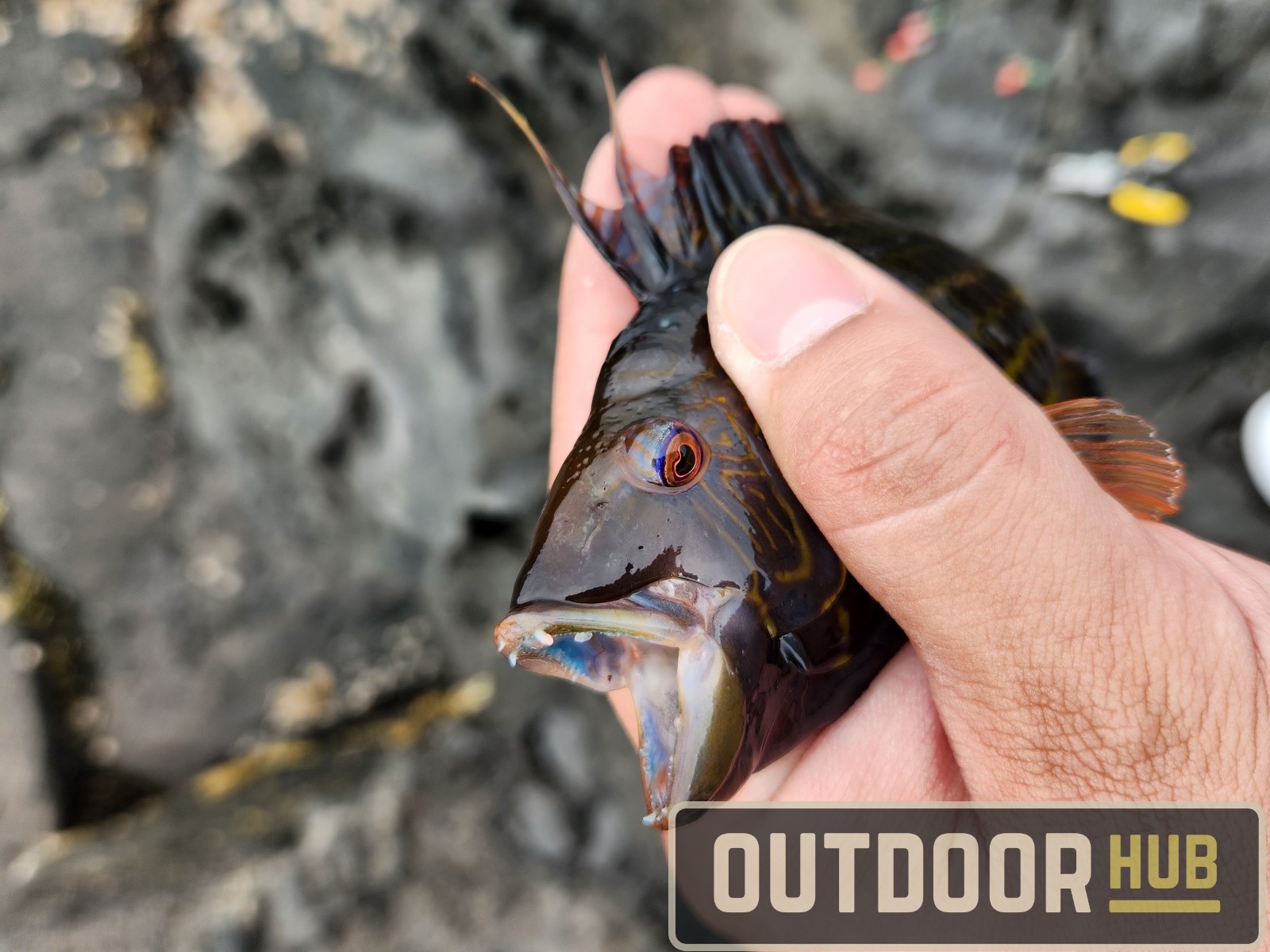
It took three days and three different spots around the island to finally get a fish. But there was no time to stick around, this was a buzzer-beater fish for me so we packed up and went out for a quick lunch before we had to leave. My wife had been so patient with me this whole trip, so we went to a local spot famous for its Jeju Island beltfish that she had wanted to try before we had to take the car back. I didn’t catch it but it was still tasty.
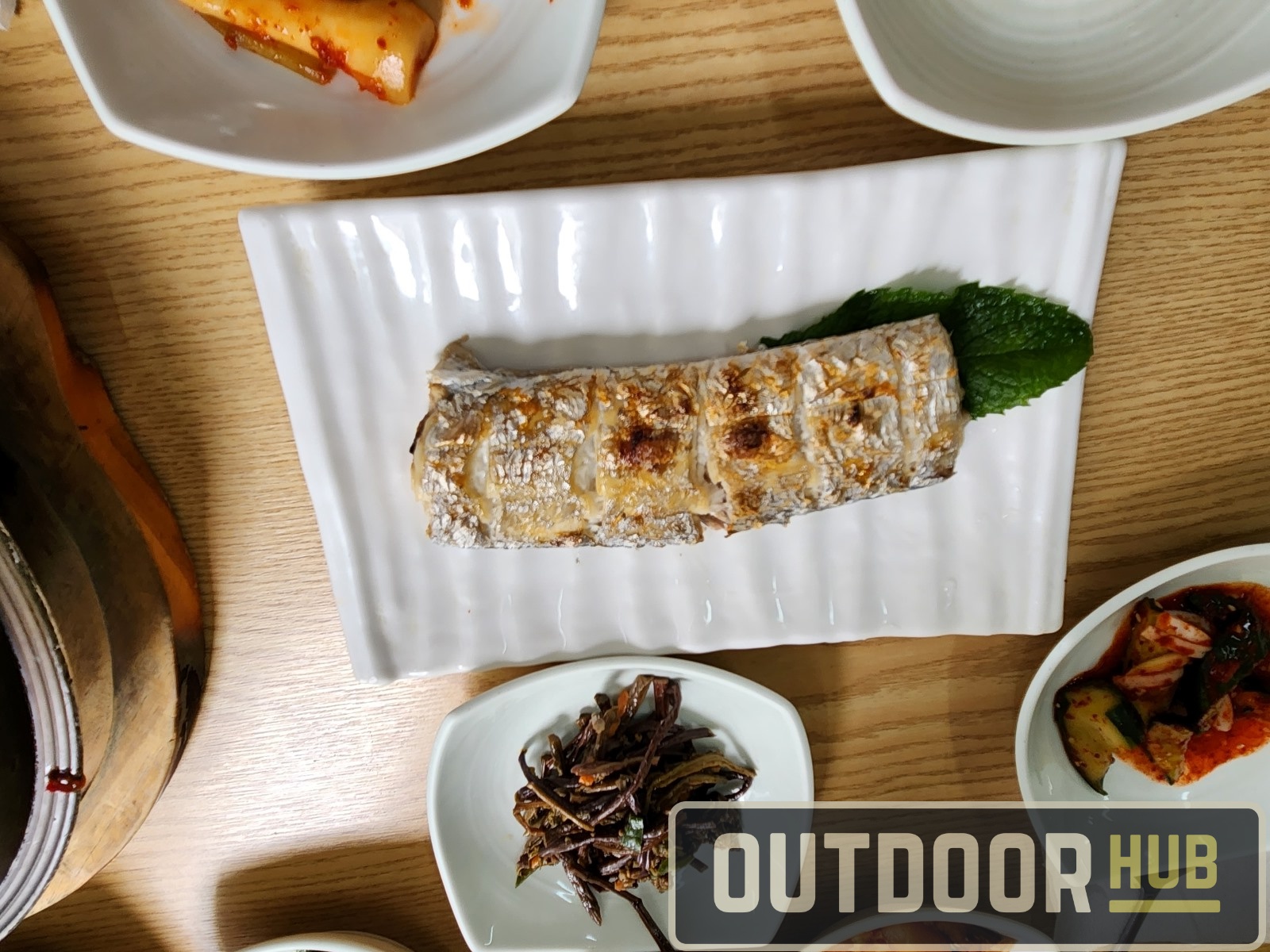
I really want to come back to try again, but next time it’ll probably be on a boat. More than likely I’ll take up a family friend’s offer to go on his charter boat in the future instead of shore fishing. I’ve learned my lesson: look at what the locals do, and don’t be a know-it-all. If you have the chance do definitely visit, even if you don’t have the chance to fish. The natural beauty of the land is something that shouldn’t be missed.
